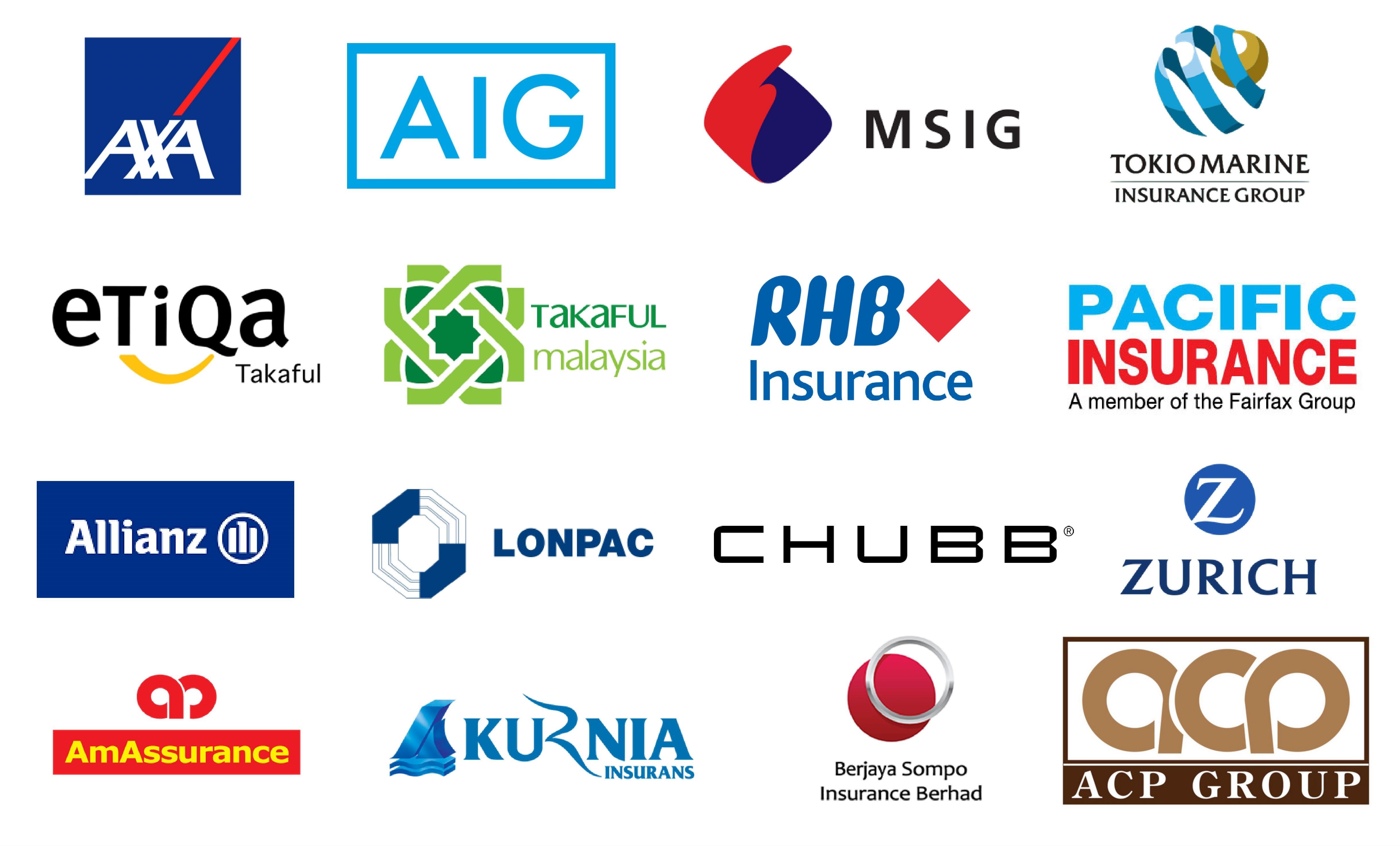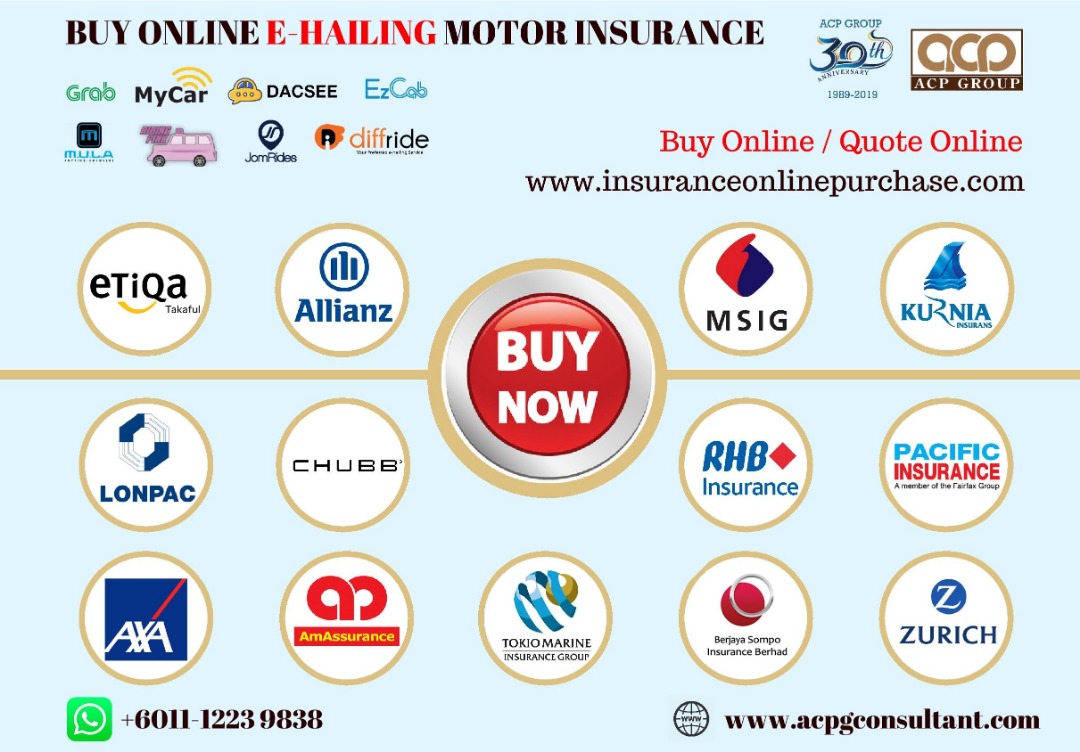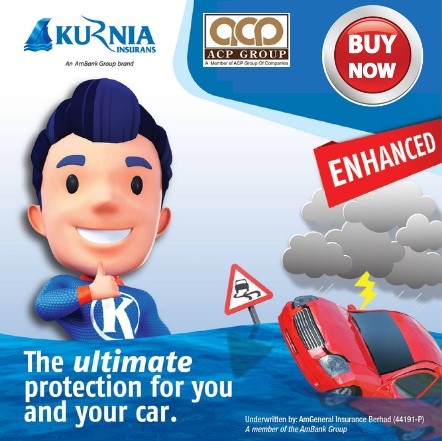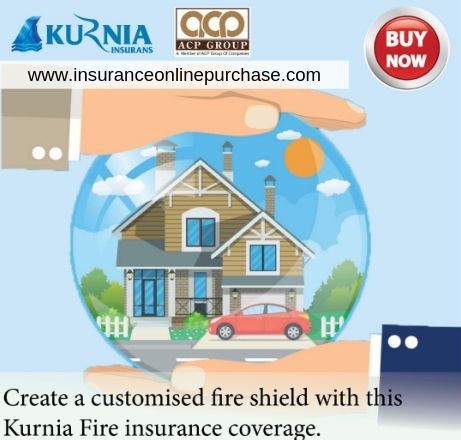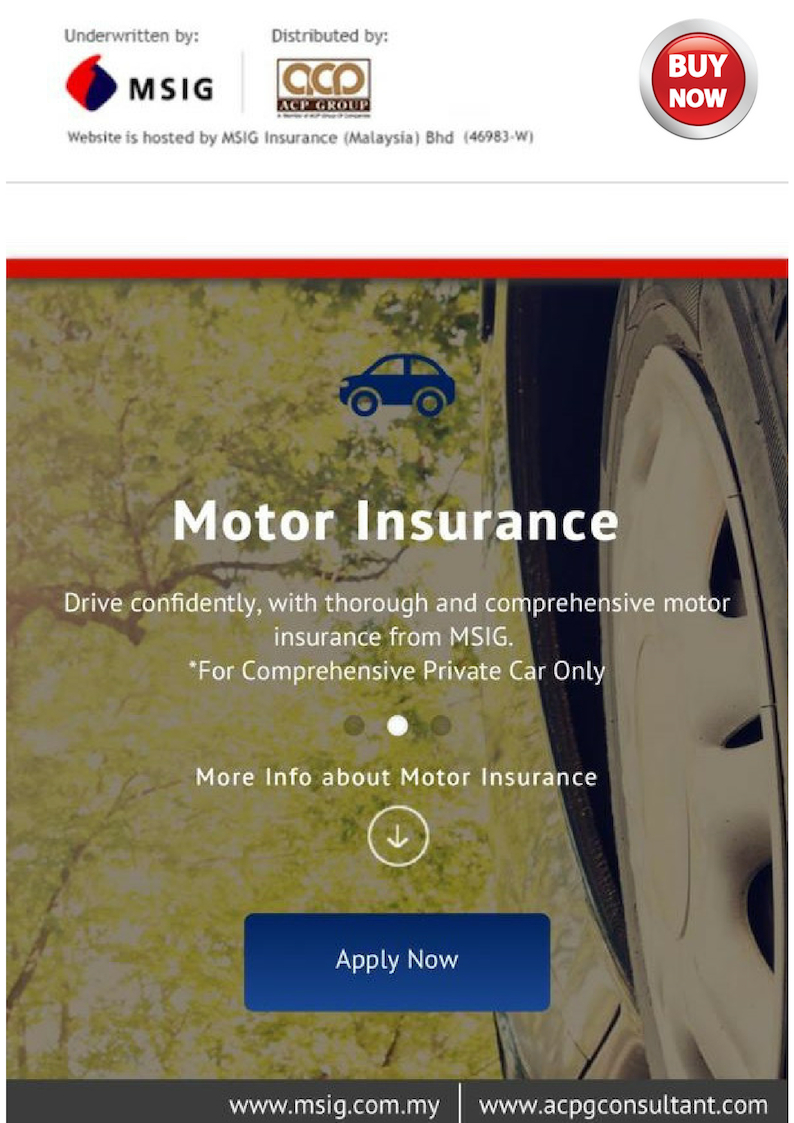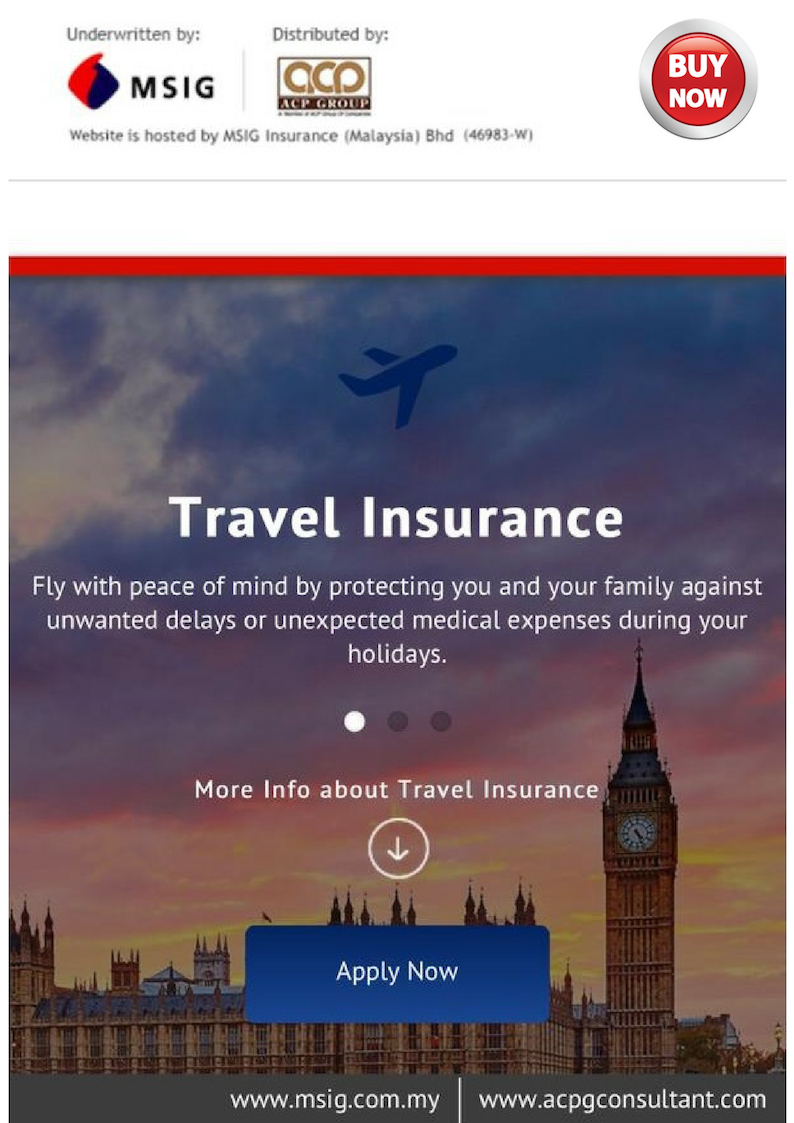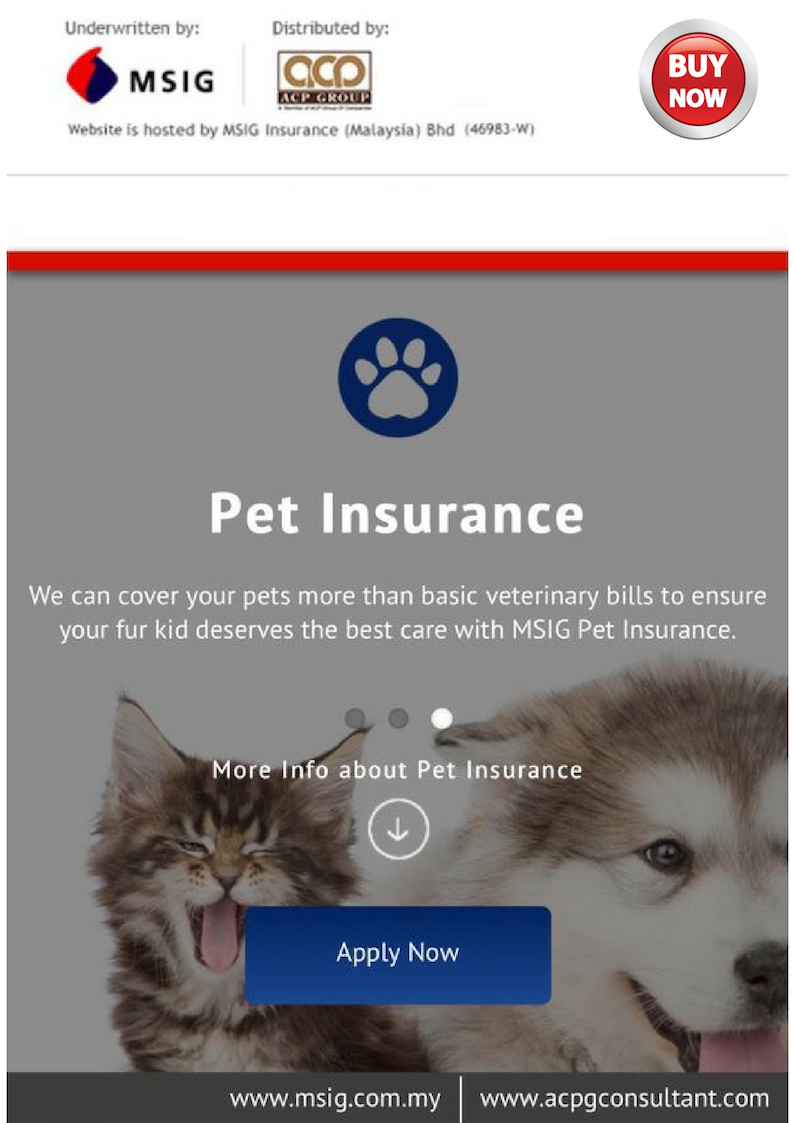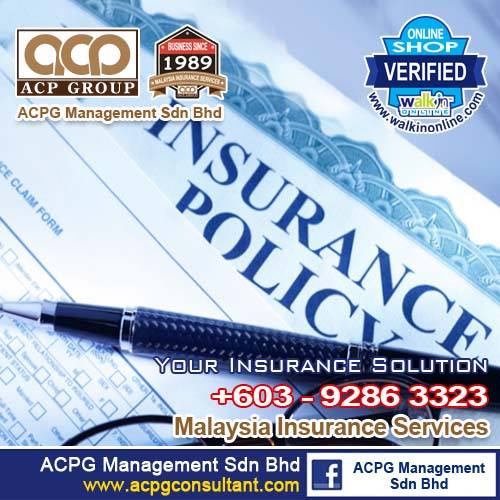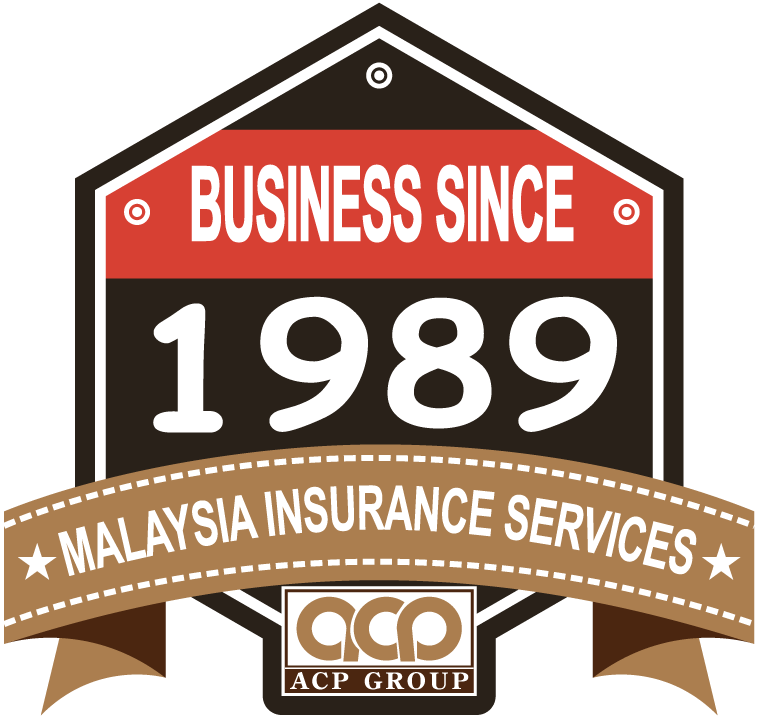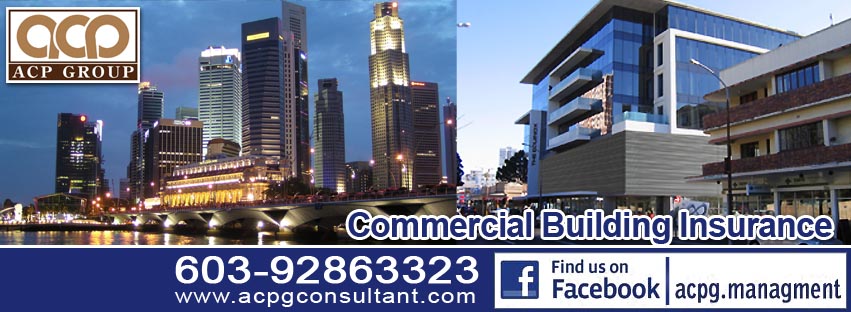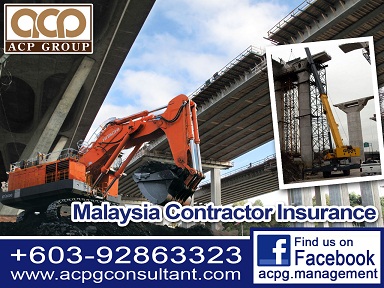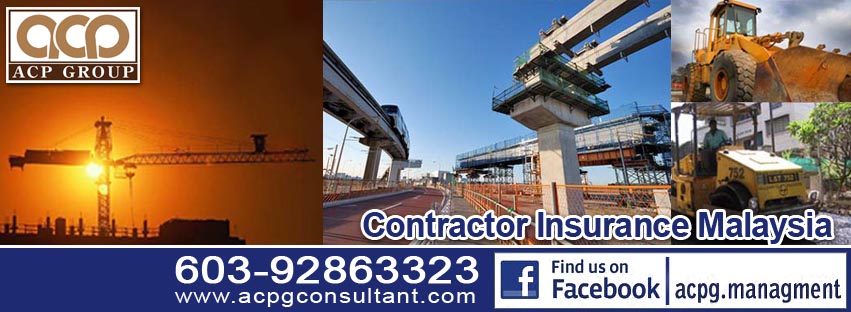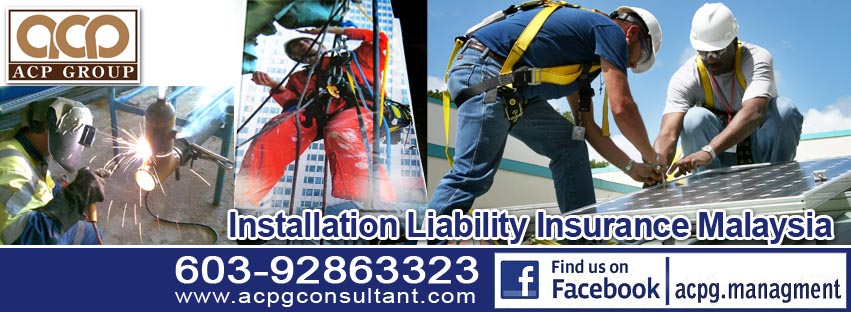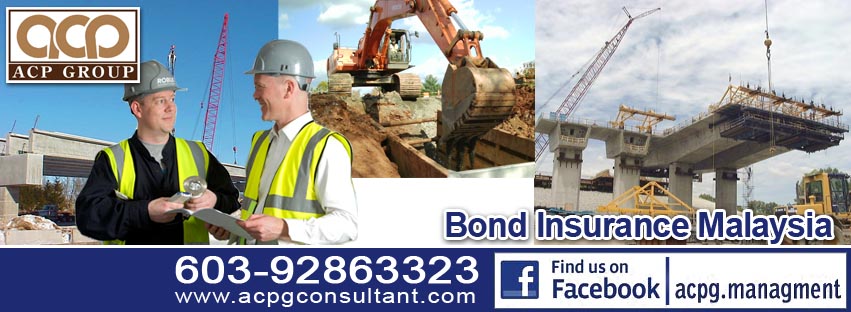Engineering
Insurance Malaysia
Construction
Insurance Malaysia
Contractors'
All Risks Insurance Malaysia
Erection
All Risks Insurance Malaysia
Public
Liability Insurance Malaysia
Workmen
Compensation Insurance Malaysia
Foreign
Worker Insurance Malaysia
Arranged
By
ACPG
Management Sdn Bhd
+603-92863323,
+6011-12239838
Construction
Insurance Malaysia
A
proven leader in the construction industry, ACPG Insurers delivers integrated
property & casualty and specialized insurance solutions which are tailored
to construction risks from:
Residential
and Commercial Projects
Civil
Engineering Projects such as pipelines, dams, roads and rail
Power
and Energy Projects of all sizes
Petrochemical
and Industrial plants
Our
unique industry practice group provides clients with a comprehensive spectrum
of products including Project Cargo, Casualty, Surety, Environmental and
Project Professional Indemnity.
Whether
you’re a Principal, Property Developer, Main Contractor, we will work
collaboratively with you and your broker to help develop seamless and effective
risk management solutions.
OUR
STRENGTHS
By
working with ACPG Insurers Construction Industry Practice, you will benefit
from our strengths which encompass:
Local
knowledge backed by global capability
Comprehensive
suite of services
Experienced
underwriting team
Dedicated
Construction Risk Engineers
Superior
Claims Handling and Administration
Consultative
approach to loss prevention and mitigation
Tailor-made
programs backed by client-centric service
Broad
coverage
Long-term
focus on client relationships
PRODUCT
RANGE
ACPG
Insurers Construction Industry Practice offers a range of products and services
including:
Contract
Works
Delay
in Start Up
General
Liability
Umbrella/Excess
Casualty Covers
Project
Professional Liability
Environmental
Pollution Liability
Contract
Surety
Construction
Risk Management Services
Marine
Cargo including DSU
Directors
& Officers Liability
Terrorism
Construction
All Risks – Builder Risk
Contractors,
property developers and principals will all benefit from this insurance, which
provides both single risk project cover and annual polices. It is available on
a standalone basis but can also be packaged with excess casualty (GL),
employers’ liability or environmental impairment liability.
PRODUCT
HIGHLIGHTS
ACPG
Insurers have a strong track record of leading the insurance of large and
complicated project contracts
ACPG
Insurers are recognised technical expertise in the sector
Our
expertise in claims handling and investigation is widely acknowledged
ACPG
Insurers seek to develop long-term relationships with clients
COVER
Our
standard cover includes contract materials and/or works.
Cover
can be extended to include:
Contractors’
plant and equipment
Delay
in start up
Non-negligent
liabilities
Public
liability
Construction
All Risks – Civil Engineering
This
insurance provides contractors involved in hydro projects, motorways, railways
and pipelines with annual cover or single risk project cover.
PRODUCT
HIGHLIGHTS
ACPG
Insurers have a strong track record of leading the insurance of large and
complicated project contracts
ACPG
Insurers are recognised technical expertise in the sector
ACPG
Insurers seek to develop long-term relationships with clients
COVER
Our
standard cover includes:
Consequences
of design
Extended
maintenance
Natural
catastrophes
Property
damage only
Primary
third party liability
Cover
can be extended to include:
Delay
in start up
Full
design
Erection
all Risks
ACPG
Insurers Erection All Risks (EAR) insurance includes the erection and
installation of electrical or mechanical plant and machinery.
It’s
ideal for mechanical and electrical contractors looking for annual contract
cover or developers, manufacturers, power and energy companies involved in
large and complex installations.
Our
target areas include construction of power plants, oil and gas facilities and
other heavy industries such as steel, aluminium and cement, as well as
traditional light engineering projects such as bottling plants and
pharmaceuticals.
PRODUCT
HIGHLIGHTS
Experience
in writing many types of risks from standard installation contracts to large
scale power and energy plants
A
strong track record of leading the insurance of large and complex project
contracts
The
capacity to cover contracts in many overseas territories
Highly
experienced risk engineers who can assist in risk management and risk
reduction, as well as ensure that standards are maintained during the erection
and installation works to help reduce losses
COVER
Our
standard EAR cover is for the erection and / or installation of electrical or
mechanical plant and machinery globally.
It
can also cover losses during the testing and commissioning prior to hand-over
and damage during the contractual maintenance period.
Cover
can be provided for movement and re-erection of machinery along with testing,
commissioning and maintenance of installed machinery.
An
‘all-risks’ cover that includes breakdown and explosion during testing and
commissioning.
Available
on contracts overseas subject to some territorial and environmental peril
limitations.
The
standard insurance offers cover for defective design under the wording and
damage to installed equipment during maintenance visits. This can be extended
to give wider defective design cover and either extended or ‘full’ or guarantee
maintenance.
Comprehensive
General Liability (CGL) Insurance
To
meet the needs of casualty insurance clients it takes underwriting skill, risk
engineering expertise and superior claims handling. These are key strengths of
ACPG Insurers.
ACPG
Insurers has a broad appetite for risk and provides public and product
liability to medium, large, and multinational businesses on a domestic and
international basis.
BENEFITS
Flexible
policies which can be tailored to client needs
Highly
experienced and dedicated casualty underwriters
Cover
is available for North American exports and domiciled companies
Casualty
Engineers with specialist expertise
Multinational
capabilities
Proven
global claims handling capabilities
Foreign
Workers Insurance
Employees
are a company's greatest asset therefore it is essential for an employer to get
their employees protected.
Being
one of the approved panel insurance companies to provide foreign workers
insurance, ACPG Insurers has three products designed to provide financial
relief for the employer in the event of death, hospitalization or repatriation
of their foreign workers.
Foreign
Workers Compensation Scheme (FWCS)
As
provided under Section 26(2) of the Workmen’s Compensation Act 1952, it is
mandatory for every employer to insure all their foreign workers employed by
the company under the Foreign Workers Compensation Scheme (FWCS).
ACPG
Insurers is one of the panel insurance companies appointed and approved by the
Ministry of Human Resources to underwrite FWCS. The scheme provides foreign
workers with personal accident and repatriation benefits during and outside of
working hours.
COVERAGE
Foreign
workers who are under the employment of the insured company will enjoy coverage
that include
Death
and disability due to an accident
Disease
arising out of and in the course of employment
Medical
expenses
Repatriation
expenses
Foreign
Workers Hospitalization & Surgical Scheme (FWHS)
Effective
1 January 2011, all foreign workers in Malaysia are required to purchase a
RM120 premium per year
Foreign
Workers Hospitalization & Surgical Scheme (FWCS) that provides RM20,000
annual coverage.
ACPG
Insurers is one of the panel insurance companies appointed and approved by the
Ministry of Health (MOH) to underwrite the FWHS.
BENEFITS
Under
the insurance policy, foreign workers will enjoy benefits that include
Daily
hospital and room board of up to a maximum of 30 days
Intensive
care unit (ICU) of up to a maximum of 15 days
Operating
theatre fees
Surgical
fees
Anaesthetist
fees
In-hospital
physician visits of up to a maximum of 30 days
In-hospital
specialist consultation visits of up to a maximum of 30 days
Ambulance
fees
Medical
report fees
Foreign
Workers Insurance Guarantee (FWIG)
Foreign
Workers Insurance Guarantee (FWIG) is a guarantee required by the Immigration
Department from the employer as a security deposit for the employment of
foreign workers (excluding Domestic Maid) under Regulation 21 of the
Immigration Regulations.
This
insurance serves as a guarantee to the Immigration Department to cover the
repatriation expenses in the event the foreign worker is required by the
authorities to be sent back to his/her country of origin during his/her course
of stay in Malaysia.
The
circumstances could arise from:-
Breach
of Immigration Act
Foreign
worker is caught involving in illegal and illicit activities such as drug,
immoral work, etc.
Employer
goes into liquidation and is unable to provide the return passage for the
foreign worker
Engineering
Insurance Malaysia
Protect
your business against unforeseen events or disruption. Select from our range of
commercial insurance products to protect your business, goods, employees, etc.
Our team of knowledgeable, experienced and dedicated staff is always on hand to
provide insurance solutions for all your business needs.
Contractors'
All Risks insurance Malaysia
Contractors'
All Risks insurance is designed to provide coverage for all parties involved in
a construction project.
There
are usually two main groups of named insured. They are the Principal and the
Contractor(s). The Principal is the party who commissions the work. The
principal will usually be the party who owns the building when completed. The
contractor is responsible for the planning and execution of the contract works.
Where nominated sub-contractors or other sub-contractors are engaged, they can
be included under the policy.
There
are two sections in this Policy:
Section
I: Material Damage
This
Section provides cover for loss or damage to the contract works caused by any
unforeseen and sudden physical loss or damage from any cause, other than those
specifically excluded.
Section
II: Third Party Liability
This
Section provides indemnity for the insured’s legal liability for accidental
bodily injury or property damage to third parties occurring in direct
connection with the contract works.
For
more sophisticated operations, you would require a specially customised
insurance program that offers maximum protection and flexibility. We ACPG team
of professional staff is well versed to provide you with all the necessary
guidance and advice.
Erection
All Risks Insurance Malaysia
Erection
All Risks Insurance is designed to provide coverage for the installation and
erection of ready-built engineering projects such as machinery, equipment or
other fittings in factories.
There
are two sections to this Policy:
Section
I: Material Damage
This
Section provides cover for loss or damage to the contract works caused by any
unforeseen and sudden physical loss or damage from any cause, other than those
specifically excluded.
Section
II: Third Party Liability
This
Section provides indemnity for the insured’s legal liability for accidental
bodily injury or property damage to third parties occurring in direct
connection with the erection works.
For
more sophisticated operations, you would require a specially customised
insurance program that offers maximum protection and flexibility.
Our
team of professional staff is well versed to provide you with all the necessary
guidance and advice.
Public
Liability Insurance Malaysia
With
increasing awareness of consumers, enterprises are exposed to a myriad of legal
liabilities arising from accidents due to acts of negligence of its employees
or representatives in the course of business.
Business
prudence requires that protection against such contingents cannot be
compromised.
With
Public Liability insurance, you have the assurance that compensation for claims
from third parties for injury or damage to their property including claimants’
costs are taken care of.
Commercial
and Business Insurance
Arranged
By
ACPG
Management Sdn Bhd
Business
Insurance
Commercial
All Risks
Commercial
Motor Vehicles
Equipment
All Risks
Fidelity
Guarantee
Group
Hospitalization
Group
Personal Accident
Money
Office
and Shop Insurance Scheme (OASIS)
Plate
Glass
Engineering
Boiler
& Pressure Vessel
Contractors’
All Risks
Deterioration
of Stock
Electronic
Equipment
Erection
All Risks
Machinery
Breakdown
Machinery
Breakdown – Loss of Profits
Machinery
& Equipment
Storage
Tank Installation
Foreign
Worker Insurance
Foreign
Worker Insurance Guarantee
Foreign
Worker Compensation Scheme (FWCS)
Foreign
Worker Hospitalization & Surgical Insurance Scheme (SKHPPA)
Liability
Comprehensive
General Liability
Directors
& Officers Liability
Products
Liability
Professional
Indemnity
Public
Liability
Warehousemen’s
Liability
Marine
Bailee
Liability
Credit
Insurance
Marine
Hull
Marine
Inland Transit
Workmen
Employer’s
Liability
Workmen’s
Compensation
ACPG
Management Sdn Bhd
Head
Office
158-3-7,
Blok 158, Kompleks Maluri,
Jalan
Jejaka, Taman Maluri, Cheras,
55100
Kuala Lumpur, Malaysia.
http://www.acpgconsultant.com
enquiry@acpgconsultant.com
+603-92863323,
+6011-12239838
Contractor
All Risk Insurance (CAR),
Erection
All Risk Insurance (EAR)
Public
Liability Insurance (PL)
Workmens
Compensation Insurance (WC)
Foreign
Workers Compensation Scheme Insurance
Construction
& Engineering Insurance
Construction
Insurance
Arranged
by
ACPG
Management Sdn Bhd (Insurance Biz since year 1989)
www.acpgconsultant.com
+603-92863323,
+6011-12239838
Construction
Insurances Explained - Malaysia Contractors' All Risks (CAR) Insurance and
Malaysia Erection All Risk Insurance (EAR)
What is
'Contractors' All Risks (CAR) Insurance and Erection All Risk Insurance (EAR) ?
Contractors'
All Risks (CAR),Erection All Risk Insurance (EAR) insurance is an insurance
policy that provides coverage for both damage to a property and third-party
injury or damage claims. Contractors' all risk (CAR) ,Erection All Risk
Insurance (EAR) insurance policies are considered non-standard insurance
policies.
Construction
projects typically involve two primary types of risk: damage to the property,
and third-party claims of injury or damage.
Damage
to the property could include the structure not being properly constructed, or
receiving damage during a renovation. Third-parties, including subcontractors,
may become injured while working at the construction site.
Contractors'
all risk (CAR) insurance, Erection All Risk Insurance (EAR) bridges these two
risks into a common policy, and helps cover the gap between exclusions that
would otherwise exist when using separate policies.
BREAKING
DOWN 'Contractors' All Risks (CAR) Insurance, Erection All Risk Insurance (EAR)
CAR and
EAR insurance is typically taken out jointly by both the contractor and the
employer, with other parties such as financing companies having the option of
being named to the policy. Because multiple parties are included in the policy
they each retain the right to file a claim against the insurer, although all
parties also have the duty of informing the insurer of any injuries and damages
that may result in a claim.
The goal
of using a CAR & EAR insurance policy is to ensure that all parties are
covered on a project, regardless of the type of damage to the property or who
caused the damage. Insurers who underwrite this type of policy lose the right
to subrogation, meaning that if it pays out funds to one party in the contract
then it cannot seek to recover those funds from another party in the contract.
For
example, if the owner of a large building and the contractor working on the
building are on the same CAR & EAR policy, any costs of damage to the
building caused by the contractor can be recovered by the building owner when a
claim is filed. The insurer, however, cannot seek to recover funds from the
contractor.
Risks
often covered under a CAR & EAR policy include fire, flood, wind,
earthquakes, water damage and mold, construction faults, and negligence. They
typically do not cover normal wear and tear, willful negligence, or poor
workmanship.
Malaysia
Contractors' All Risks (CAR) Insurance, Malaysia Erection All Risk Insurance
(EAR) Definition
Construction
Insurances Explained – Contractors’ All Risks Insurance, Erection All Risk
Insurance (EAR)
Contractors’
All Risks Insurance (CAR), Erection All Risk Insurance (EAR)
There
are several terms used in the insurance world that mean different things to
different people and one of these is Contractors’ all risks (CAR) insurance and
Erection All Risk Insurance (EAR).
The term
is sometimes used to refer to both the material damage and liability covers
required by a Contractor.
Most
insurance practitioners would regard CAR and EAR as referring only to the
material damage cover on the contract works unless the real intention was
obvious from the rest of the text.
Anyone
using the term, whether verbally or in writing, should make their intention
clear, so as to avoid any ambiguity in interpretation.
CAR and
EAR covers what is stated within the actual insurance policy for which the
premium is paid. The Employer has the opportunity to specify his requirements
as to what is to be included within the CAR and EAR within the contract if the
Contractor is responsible for the provision of such insurance alternatively the
Employer specifies the cover within the policy he takes out where the
Contractor is not obligated to provide insurance under the Contract.
A CAR
& EAR policy provides insurance coverage when the Works being constructed,
as defined in the Contract, are damaged by an insured peril and require
replacing and/or repairing. It is normal for the Contract to stipulate who will
provide this cover.
If it
were the Contractor then it would be normal for them to take out a specific
policy to cover the project or alternatively if available to them add it to a
policy covering all their contracts up to a specific limit. In the event the
responsibility should fall upon the Employer then cover would normally be under
a policy arranged specifically for that project.
When
arranging the CAR and EAR coverage for a project it is essential that care be
taken in identifying the correct Contract Value, Construction Period, Defects
Liability Period and Description of the Works.
The
policy will normally cover any physical loss or damage unless the cause is
specifically excluded, thus the term ‘All-Risks’ whilst commonly used, is to
some extent, misleading. Nevertheless the cover is very wide and embraces
protection against fire, aircraft, explosion, earthquake, riot, malicious
damage, storm, flood, burst pipes, impact and other accidental damage.
However,
CAR and EAR policies can be issued covering loss or damage by particular and
specified perils, e.g. fire, flood, storm. In both cases the policy should
generally be extended to provide protection in respect of damage by terrorists
where such is commercially available.
In
addition material damage to the Works or the machinery being erected CAR and
EAR generally includes coverage for third-party liability for bodily injury and
property damage to the surrounding properties.
The
policy can in some circumstances be extended to include consequential losses or
losses due to delay in start-up following loss or damage under material damage
section.
This
cover is also called advanced loss of profit.
Either
way it is imperative that the parties fully understand what exclusions apply or
which perils are listed to ensure that the cover gives sufficient protection to
the Employer and the Contractor.
The Sum
to be insured under CAR and EAR should be adequately calculated and must
include at least the Contract Value, value of Contractors’ plant and machinery,
value of Employers existing property, estimated cost of debris removal, value
of all temporary facilities, tax and an allowance for inflation.
In
addition it is wise to make sure that on site as well as offsite storage
facilities are included under the policy together with the value of any free
issue materials where the Employer transfers the risk to the Contractor under
the Contract.
The
policy should always be in the joint names of the Employer and Contractor
although the Contract may stipulate that the Bank or Financing institutions are
also named in the policy, depending upon their specific requirements for
providing project financing.
Joint
names insurance is where two or more parties (for example the Employer and the
Contractor) are jointly insured under a single policy.
Each
party has legal rights under the policy and can claim against the insurer, but
the insurer has no right of subrogation against the other insured party.
It is
important to remember that each party is bound by the normal rules, and to
avoid any difficulties each should individually comply with the duties of
disclosure and notification.
Having
an interest noted on a policy is very different and is rarely an acceptable
substitute for a joint names policy.
A
third-party is not a party to the contract of insurance, and thus cannot claim
against the insurer. Similarly, it does not prevent the insurer from exercising
rights of subrogation against the third-party.
PAM,
IEM, FIDIC and generally most standard forms of contract contain fairly
detailed provisions for property and liability insurance. Generic amendments to
these insurance provisions are not normally essential, however, discreet
changes may be required depending on the nature of a specific project (for
example, amending the definition of joint names insurance policy to include the
project funders, or to reconcile the standard provisions with a project
insurance policy taken out by the Employer).
All CAR
adn EAR policies will have an excess that will be deducted from any claim
settlement. On occasions insurers will apply more than one excess under a
policy for specific losses where a certain risk warrants such and additional
excess being imposed.
In
addition generally most policies include exclusions for which extensions of CAR
and EAR coverage maybe granted or included within the CAR and EAE coverage of
the CAR and EAR policy may be extended to cover such as:
(A)
professional fees;
(B)
automatic reinstatement of the policy limit following a loss;
(C)
debris removal;
(D) free
issue materials;
(E)
discovery of munitions of war;
(F)
inflation clause;
(G)
plans and documents;
(H)
others.
Individual
insurance providers specialising in this class of insurance will also have
their own list of extensions that they will negotiate with insurers. As an
example you may refer to the example provided which is so provided as an
example and these will vary depending upon the general insurance market at the
time the CAR and EAR insurance is taken out by the insuring party.
In
addition the parties need to consider if the CAR and EAR policy is to cover the
respective party’s to the Contract for:
Additional
cost of construction of un-built works in the event of
(A)
Inflationary Costs
(B) Out
of sequence working
(C)
Defective design, materials and workmanship
(D)
Extended defective condition exclusion
(E)
Limited defective condition exclusion
(F)
Design improvement exclusion
It is
understood that various legal challenges are currently on-going as to the
validity of these clauses and therefore whilst the description of coverage
above may not reflect the current or future legal interpretation. As with all
contractual documentation it is recommended that all parties seek professional
advice in respect of these risks.
It
should be noted here that if the Contractor arranges CAR and EAR cover it may
restrict or even remove the ability of the Employer to purchase any
consequential loss coverage.
Construction
Insurances Explained – Public Liability Insurance
Malaysia
Public Liability Insurance
Public
Liability Insurance
Typical
public liability insurance will provide indemnity in respect of liability at
law for damages arising from accidental injury to third parties (not employees)
or accidental damage to third-party property arising in connection with the
project. It may also cover liability for damages arising out of any nuisance or
trespass committed by the insured and any rights (such as a right of way) with
which the insured may accidentally interfere in the course of the development.
Other elements of cover normally provided include defence of claims costs, the
use of plant on the site and legal defence costs in respect of prosecutions
brought under the Health and Safety legislation.
Many
insurance providers now exclude claims arising from sources they regard as
particularly hazardous, such as terrorism, asbestos, gradual pollution, mould,
e-commerce transactions and, potentially, financial loss where there has been
no ‘injury or damage’ as defined in the policy. Insurers may restrict their
liability for particular risks by imposing inner limits much smaller than the
overall policy limit.
Public
liability insurance coverage may be arranged on an annual basis with a specific
limit being the maximum amount payable in the event of any one claim or series
of claims arising from one occurrence. It is normal for this limit to apply in
respect of any one claim but some limits do apply to all claims in the period
of insurance.
There
may be a limit on any one claim and then a separate aggregate limit. Sometimes
there are elements of cover that insurers may be particularly concerned about,
e.g. sudden and accidental pollution may be subject to lower limits of
liability and/or separate aggregates.
Whatever
type is issued, it is the insured party or parties that decide on the level of
cover to be purchased dependent upon the risk exposure arising from the work
being undertaken. When deciding upon the limits to be purchased it is best not
to rely on any figure requested within a contract document, as this is normally
the minimum amount required.
The
policy will normally be subject to an excess that will be deducted from the
total amount claimed and may apply only in respect of claims for property
damage or in respect of all claims.
Every
party on site with a potential liability to the public will require an
insurance policy. Additional responsibilities for each party will also be set
out in the contract. It is traditional and still common for the Contractor to
arrange a cover on behalf of the Employer.
However,
it has to be asked if this is in the best interests of everyone, whether the
Employer who may find he has only nominal cover or a claimant who may find they
are passed from one insurer to another if there are different policies in
different names. One option is to effect a project policy arranged by the
Employer.
The
parties protected by the policy will vary according to the Employer’s
requirements and the nature of the contract forms being adopted. The indemnity
can apply to the Employer only or together with the Contractor, his
subcontractors and tradesmen. In addition there may be freeholders, superior
landlords, financiers plus professional consultants and suppliers (on site
exposures only) to be added to the list of insured. The policy should set out
the names of all insured and specify in which policy covers they have an
insurable interest.
Public
liability insurance is not a cheap insurance and if one party does arrange
cover in two or more names the cost of this and the potential savings to the
other names should to be reflected in tender prices.
It is
important for the Employer to decide responsibilities for placing public
liability insurance before contracts are signed, rather than just follow the
provisions of the basic contract conditions.
Whoever
is making the decision as to who must arrange the cover must consider all those
who may need to be protected.
Malaysia
Workmens Compensation Insurance
Workmen
Compensation Insurance
Innovative
and cost-effective solutions for your business
No
matter what type of business your company is involved in or how much care your
employees take in the workplace, accidents can still happen.
ACPG
Insurers is a leading provider of financial protection against liability for
workplace injuries.
Our
international experience enables us to provide innovative and cost-effective
solutions to our clients. Benefits for our clients include:
fully
integrated approach to claims management ability to remain nimble and flexible
to the emerging needs of customers online solutions that provide you with the
tools to act faster
self-insurance
services.
ACPG
Insurers Workmen’s Compensation Insurance provides cover against all sums for
which the Insured shall be liable to pay in compensation to any employee for
personal injury sustained either by accident or disease arising out of and in
the course of their employment under Common Law. Or under the following
legislation (including all subsequent amendments to these enactments and
ordinances):
LAWS
Workmen's
Compensation Ordinance 1952
Workmen's
Compensation (Amendment) Ordinance 1956
Workmen's
Compensation (Amendment) Ordinance 1976
Modification
of Laws (Workmen's Compensation) Extension and Modification Ordinance 1981
Employers’
Liability
The
Employers’ Liability Insurance policy provides cover for an employer against
liability for the damages and claimant’s costs and expenses in respect of
bodily injury or disease sustained by any person under a contract of service or
apprenticeship.
Foreign
Workers Compensation Scheme Insurance
The
benefit of this cover is that it insures death and bodily injury as a result of
work place accident or occupational disease arising out of and in the course of
employment, inclusive of journey to and from work such as:
Death
Permanent
disablement
Permanent
total disablement
Permanent
partial disablement
Temporary
total disablement
Medical
expenses
Repatriation
expenses
Personal
accident
Malaysia
Construction & Engineering Insurance
Essential
cover against sudden or unforeseen losses
Engineering
and construction projects often involve huge capital investments and therefore
required specialised risk mitigation.
ACPG
Insurers Construction & Engineering Insurance will help protect your
investments against loss or damage to your engineering or construction
projects. We have the specialist expertise to provide comprehensive financial
protection against many areas of risks, including work in progress or material
damage of your project and also liability from third-party claims resulting
from engineering and construction works.
Our
flexible approach allows policies to be tailored to your specific needs. Our
competitive terms appeal to customers of all sizes, from owner builders to
principals of major civil engineering projects.
ACPG
Insurers provides cover for:
Contractors’
All Risks
Civil
Engineering Completed Risks
Erection
All Risks
Boiler
and pressure vessel
Electronic
equipment
Machinery
breakdown
Machinery
breakdown loss of profit
Storage
tank
Special
perils
Contractor
All Risk Insurance in Malaysia (CAR)
AIG
Malaysia Contractor All Risk Insurance
Allianz
Malaysia Contractor All Risk Insurance
Ace
Jerneh Malaysia Contractor All Risk Insurance
AXA
Malaysia Contractor All Risk Insurance
AMGeneral
Malaysia Contractor All Risk Insurance
Berjaya
Sampo Malaysia Contractor All Risk Insurance
CHUBB
Malaysia Contractor All Risk Insurance
Danajamin
Malaysia Contractor All Risk Insurance
Etiqa
Malaysia Contractor All Risk Insurance
Kurnia
Malaysia Contractor All Risk Insurance
Liberty
Malaysia Contractor All Risk Insurance
Lonpac
Malaysia Contractor All Risk Insurance
MSIG
Malaysia Contractor All Risk Insurance
MPI
Malaysia Contractor All Risk Insurance
P&O
Malaysia Contractor All Risk Insurance
OAC
Malaysia Contractor All Risk Insurance
RHB
Malaysia Contractor All Risk Insurance
QBE
Malaysia Contractor All Risk Insurance
Takaful
Malaysia Contractor All Risk Insurance
Tokio
Marine Malaysia Contractor All Risk Insurance
The
Pacific Malaysia Contractor All Risk Insurance
Tune
Malaysia Contractor All Risk Insurance
Zurich
Malaysia Contractor All Risk Insurance
Erection
All Risk Insurance in Malaysia (EAR)
AIG
Malaysia Erection All Risk Insurance
Allianz
Malaysia Erection All Risk Insurance
Ace
Jerneh Malaysia Erection All Risk Insurance
AXA
Malaysia Erection All Risk Insurance
AMGeneral
Malaysia Erection All Risk Insurance
Berjaya
Sampo Malaysia Erection All Risk Insurance
CHUBB
Malaysia Erection All Risk Insurance
Danajamin
Malaysia Erection All Risk Insurance
Etiqa
Malaysia Erection All Risk Insurance
Kurnia
Malaysia Erection All Risk Insurance
Liberty
Malaysia Erection All Risk Insurance
Lonpac
Malaysia Erection All Risk Insurance
MSIG
Malaysia Erection All Risk Insurance
MPI
Malaysia Erection All Risk Insurance
P&O
Malaysia Erection All Risk Insurance
OAC
Malaysia Erection All Risk Insurance
RHB
Malaysia Erection All Risk Insurance
QBE
Malaysia Erection All Risk Insurance
Takaful
Malaysia Erection All Risk Insurance
Tokio
Marine Malaysia Erection All Risk Insurance
The
Pacific Malaysia Erection All Risk Insurance
Tune
Malaysia Erection All Risk Insurance
Zurich
Malaysia Erection All Risk Insurance
Public
Liability Insurance in Malaysia (PL)
AIG
Malaysia Public liability Insurance
Allianz
Malaysia Public liability Insurance
Ace
Jerneh Malaysia Public liability Insurance
AXA
Malaysia Public liability Insurance
AMGeneral
Malaysia Public liability Insurance
Berjaya
Sampo Malaysia Public liability Insurance
CHUBB
Malaysia Public liability Insurance
Danajamin
Malaysia Public liability Insurance
Etiqa
Malaysia Public liability Insurance
Kurnia
Malaysia Public liability Insurance
Liberty
Malaysia Public liability Insurance
Lonpac
Malaysia Public liability Insurance
MSIG
Malaysia Public liability Insurance
MPI
Malaysia Public liability Insurance
P&O
Malaysia Public liability Insurance
OAC
Malaysia Public liability Insurance
RHB
Malaysia Public liability Insurance
QBE
Malaysia Public liability Insurance
Takaful
Malaysia Public liability Insurance
Tokio
Marine Malaysia Public liability Insurance
The
Pacific Malaysia Public liability Insurance
Tune
Malaysia Public liability Insurance
Zurich
Malaysia Public liability Insurance
Workmens
Compensation Insurance in Malaysia (WC)
AIG
Malaysia Workmens Compensation Insurance
Allianz
Malaysia Workmens Compensation Insurance
Ace
Jerneh Malaysia Workmens Compensation Insurance
AXA
Malaysia Workmens Compensation Insurance
AMGeneral
Malaysia Workmens Compensation Insurance
Berjaya
Sampo Malaysia Workmens Compensation Insurance
CHUBB
Malaysia Workmens Compensation Insurance
Danajamin
Malaysia Workmens Compensation Insurance
Etiqa
Malaysia Workmens Compensation Insurance
Kurnia
Malaysia Workmens Compensation Insurance
Liberty
Malaysia Workmens Compensation Insurance
Lonpac
Malaysia Workmens Compensation Insurance
MSIG
Malaysia Workmens Compensation Insurance
MPI
Malaysia Workmens Compensation Insurance
P&O
Malaysia Workmens Compensation Insurance
OAC
Malaysia Workmens Compensation Insurance
RHB
Malaysia Workmens Compensation Insurance
QBE
Malaysia Workmens Compensation Insurance
Takaful
Malaysia Workmens Compensation Insurance
Tokio
Marine Malaysia Workmens Compensation Insurance
The
Pacific Malaysia Workmens Compensation Insurance
Tune
Malaysia Workmens Compensation Insurance
Zurich
Malaysia Workmens Compensation Insurance
Construction
& Engineering Insurance in Malaysia
AIG
Malaysia Construction & Engineering Insurance
Allianz
Malaysia Construction & Engineering Insurance
Ace
Jerneh Malaysia Construction & Engineering Insurance
AXA
Malaysia Construction & Engineering Insurance
AMGeneral
Malaysia Construction & Engineering Insurance
Berjaya
Sampo Malaysia Construction & Engineering Insurance
CHUBB
Malaysia Construction & Engineering Insurance
Danajamin
Malaysia Construction & Engineering Insurance
Etiqa
Malaysia Construction & Engineering Insurance
Kurnia
Malaysia Construction & Engineering Insurance
Liberty
Malaysia Construction & Engineering Insurance
Lonpac
Malaysia Construction & Engineering Insurance
MSIG
Malaysia Construction & Engineering Insurance
MPI
Malaysia Construction & Engineering Insurance
P&O
Malaysia Construction & Engineering Insurance
OAC
Malaysia Construction & Engineering Insurance
RHB
Malaysia Construction & Engineering Insurance
QBE
Malaysia Construction & Engineering Insurance
Takaful
Malaysia Construction & Engineering Insurance
Tokio
Marine Malaysia Construction & Engineering Insurance
The
Pacific Malaysia Construction & Engineering Insurance
Tune
Malaysia Construction & Engineering Insurance
Zurich
Malaysia Construction & Engineering Insurance
Construction
Insurance in Malaysia
AIG
Malaysia Construction Insurance
Allianz
Malaysia Construction Insurance
Ace
Jerneh Malaysia Construction Insurance
AXA
Malaysia Construction Insurance
AMGeneral
Malaysia Construction Insurance
Berjaya
Sampo Malaysia Construction Insurance
CHUBB
Malaysia Construction Insurance
Danajamin
Malaysia Construction Insurance
Etiqa
Malaysia Construction Insurance
Kurnia
Malaysia Construction Insurance
Liberty
Malaysia Construction Insurance
Lonpac
Malaysia Construction Insurance
MSIG
Malaysia Construction Insurance
MPI
Malaysia Construction Insurance
P&O
Malaysia Construction Insurance
OAC
Malaysia Construction Insurance
RHB
Malaysia Construction Insurance
QBE
Malaysia Construction Insurance
Takaful
Malaysia Construction Insurance
Tokio
Marine Malaysia Construction Insurance
The
Pacific Malaysia Construction Insurance
Tune
Malaysia Construction Insurance
Zurich
Malaysia Construction Insurance
Foreign
Worker Insurance in Malaysia
AIG
Malaysia Foreign worker Insurance
Allianz
Malaysia Foreign worker Insurance
Ace
Jerneh Malaysia Foreign worker Insurance
AXA
Malaysia Foreign worker Insurance
AMGeneral
Malaysia Foreign worker Insurance
Berjaya
Sampo Malaysia Foreign worker Insurance
CHUBB
Malaysia Foreign worker Insurance
Danajamin
Malaysia Foreign worker Insurance
Etiqa
Malaysia Foreign worker Insurance
Kurnia
Malaysia Foreign worker Insurance
Liberty
Malaysia Foreign worker Insurance
Lonpac
Malaysia Foreign worker Insurance
MSIG
Malaysia Foreign worker Insurance
MPI
Malaysia Foreign worker Insurance
P&O
Malaysia Foreign worker Insurance
OAC
Malaysia Foreign worker Insurance
RHB
Malaysia Foreign worker Insurance
QBE
Malaysia Foreign worker Insurance
Takaful
Malaysia Foreign worker Insurance
Tokio
Marine Malaysia Foreign worker Insurance
The
Pacific Malaysia Foreign worker Insurance
Tune
Malaysia Foreign worker Insurance
Zurich
Malaysia Foreign worker Insurance
Malaysia
General Insurance Company Listing
AIG
Malaysia Insurance Berhad
AXA
Affin General Insurance Berhad
Allianz
General Insurance Company (Malaysia) Berhad
AmGeneral
Insurance Berhad
Berjaya
Sompo Insurance Berhad
Chubb
Insurance Malaysia Berhad
Danajamin
Nasional Berhad
Liberty
Insurance Berhad
Lonpac
Insurance Berhad
MPI
Generali Insurans Berhad
MSIG
Insurance (Malaysia) Bhd
Overseas
Assurance Corporation (Malaysia) Berhad
Pacific
& Orient Insurance Co. Berhad
Pacific
Insurance Berhad, The
Progressive
Insurance Berhad
QBE
Insurance (Malaysia) Berhad
RHB
Insurance Berhad
Tokio
Marine Insurans (Malaysia) Berhad
Tune
Insurance Malaysia Berhad
Malaysia
Insurance Corporate Agency
ACPG
Management Sdn Bhd (Insurance Biz since Year 1989)
Head
Office
158-3-7,
Blok 158, Kompleks Maluri,
Jalan
Jejaka, Taman Maluri, Cheras,
55100
Kuala Lumpur, Malaysia.
http://www.acpgconsultant.com
+603-92863323,
+6011-12239838







